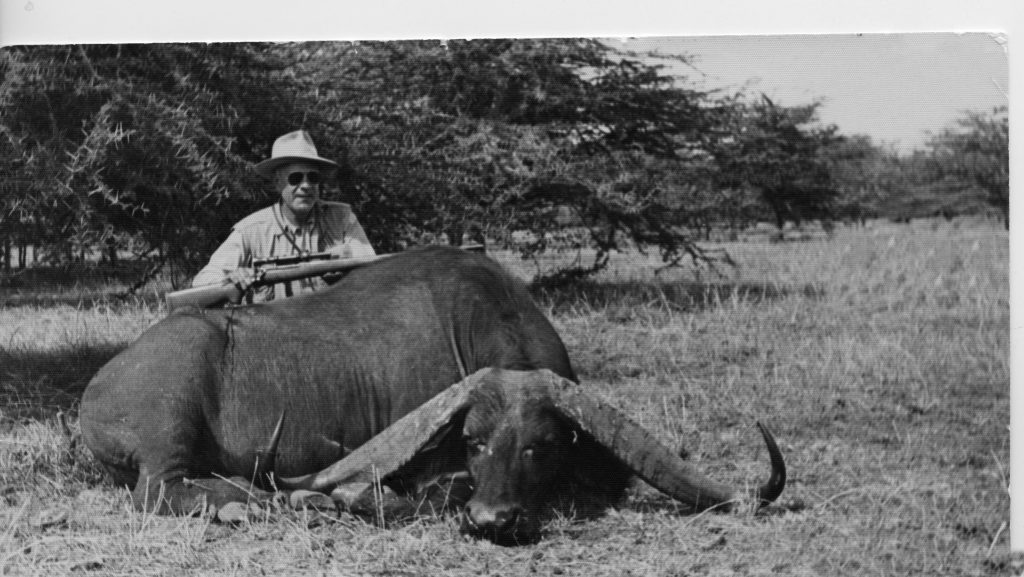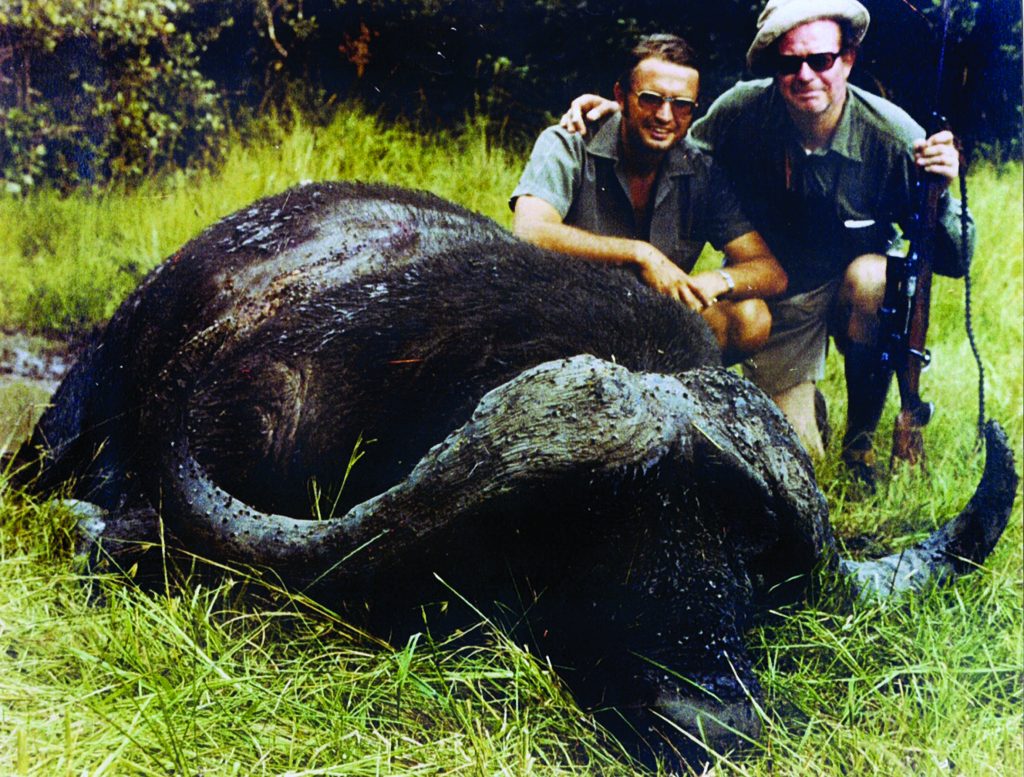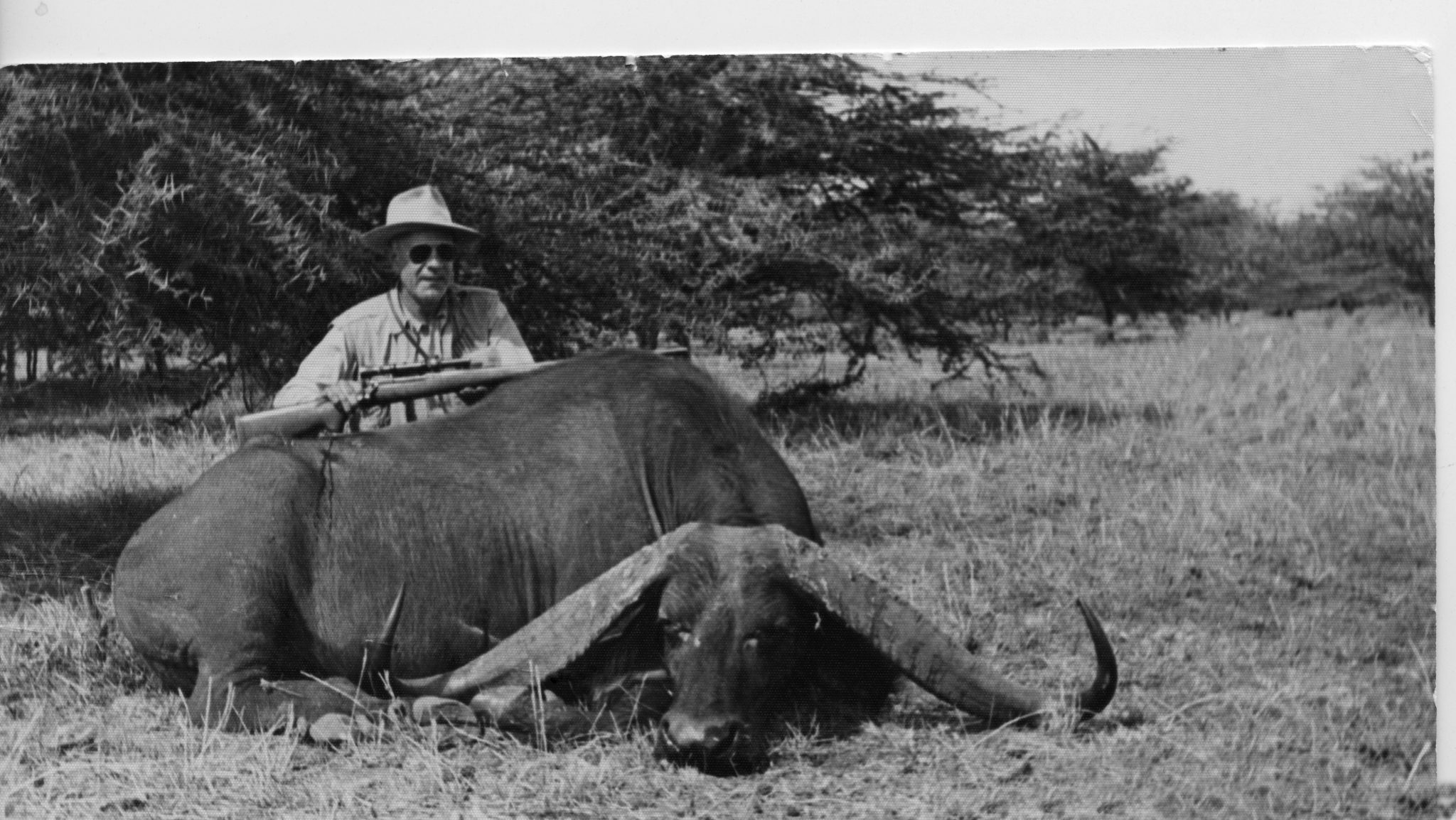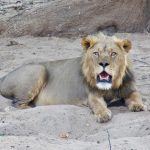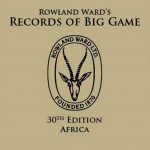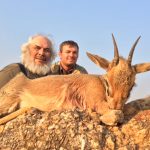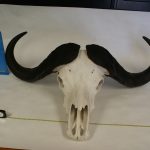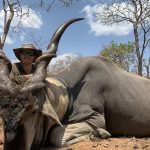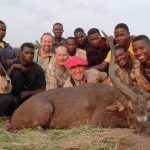The 30th Edition of Rowland Ward’s Records of Big Game will debut a new way of scoring African buffalo.
Go on a Cape buffalo safari almost anywhere in Africa, and you will hear professional hunters talk about a “38-inch bull” or say, “I saw one today I am sure would go over 40.” Since African sport hunting began, more than a century ago, a buffalo with a horn spread of 40 inches or more has been considered a very good head. Spread means how far the horns extend in a straight line at a 90-degree angle from the skull–not total length of the horns from the tip around the horn toward the skull. In most hunting grounds in Africa, obtaining a head with 40 inches of spread or more is not easy, even in the those areas with the best trophy potential, such as Zambia and Tanzania. The Rowland Ward minimum for inclusion in its record book has, for decades, been 42 inches of spread. Rowland Ward measurers have also always recorded the width of the bosses and the straight-line, tip-to-tip spread, as supplemental information.
In the past two years the editors of Rowland Ward held many in-depth discussions with biologists, game department officials, client-hunters, and professionals alike to determine what would encourage the best management practices for buffalo herds and their age structure and what measurements would reflect the most desirable buffalo trophy and, above all, encourage the shooting of older bulls. By about age seven, the spread of a buffalo is set. At that age, its overall horn length (if measured from the tip of the horn curling back toward the skull) is probably at peak. But the bosses are still “green,” or soft, and have not formed into a hard keratin material, which only happens when the buffalo reaches nine or ten years of age, according to Dr. Kevin Robertson. As a result of these discussions, in the upcoming edition of Rowland Ward’s Records of Big Game, Cape, Nile, and Central African buffaloes will be ranked on a total score that includes spread and the width of both bosses.
Rowland Ward does not allow for the measuring of green boss material, nor should it, as it occurs exclusively in up-and-coming bulls that are yet to become herd bulls–that is, the males that do most of the breeding. In extraordinary cases, some buffalo grow “airplane wing” horns that extend out and down to form horns that are shaped somewhat akin to the bottom end of the paddle of a canoe; very flat, thin, wide, and often curled. Such animals, even when very old, have almost no bosses, and often they are hermaphrodites, or bulls that have had their reproductive organs injured through fighting or predators. Such heads may have a very large spread. Under the new ranking system, however, such heads will drop down considerably in the ranks, because they have little or no bosses.
By combining the spread measurement, plus the width of the two bosses, Records of Big Gamewill encourage the harvesting of older bulls and emphasize the attributes that hunters like best in Cape buffalo: spread and hard bosses. The changes will be implemented in the 30thedition of Records of Big Game, which comes out in November 2019.
